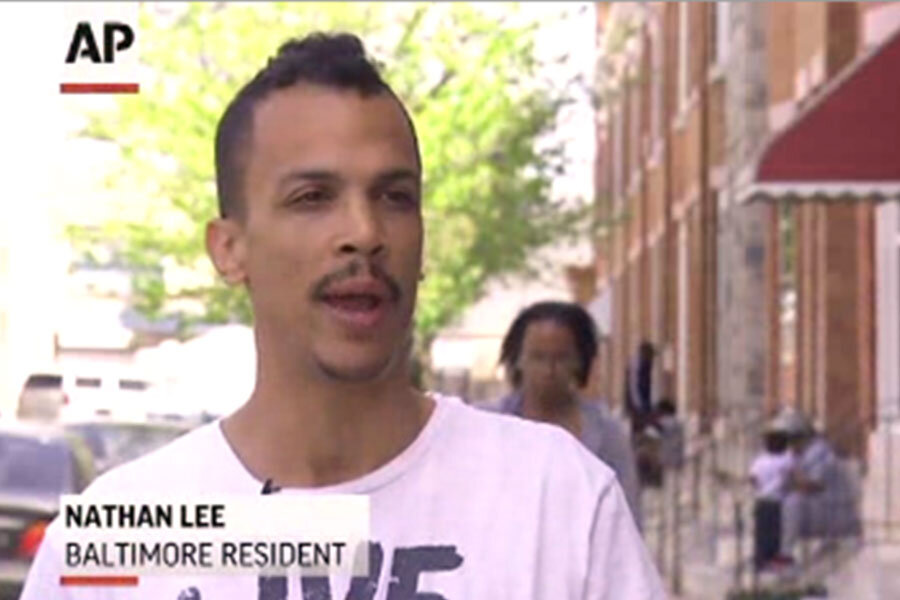Is Baltimore the worst city in America?
| Baltimore
How bad is Baltimore compared with other cities in America?
This question comes up because much coverage of Baltimore’s rioting and its aftermath intentionally or not has depicted Charm City as one of the nation’s worst-off metropolitan areas, if not the worst, a dystopian scarscape that was just waiting to burn.
That implication is the result of the media’s narrow, hot focus. Baltimore’s problems are the news, and the city’s real and terrible challenges get studied minutely in that glare. The national context? That doesn’t always get mentioned.
When you widen the lens a little bit, all of a sudden Baltimore doesn’t look so apocalyptic.
Start with the police. The instigating factor for Baltimore’s violence was the suspicious and serious injuries Freddie Gray sustained in police custody. He later died from those injuries.
Baltimore’s law enforcement certainly has much to answer for, not just in this case, but others as well. An investigation by the Baltimore Sun last fall found that the city has paid out $5.7 million since 2011 – roughly $1.4 million a year – to settle lawsuits over allegations of police brutality. One notorious case involved an officer shoving an 87-year-old woman after he had arrived at her door to say her grandson had been shot.
But other United States cities make larger payouts, even when adjusted on a per-capita basis. Chicago, for instance, paid $54.2 million in 2014 alone to settle police misconduct cases. (Chicago is about 4-1/2 times bigger than Baltimore, in terms of population.)
In 2011, Los Angeles paid out $54 million. New York City paid out $735 million, although that figure contains settlements from some other kinds of negligence claims.
Then there’s segregation. Baltimore officials for decades worked to contain blacks into certain areas while protecting others for white residents. Many houses in leafy North Baltimore were sold with covenants prohibiting resale to blacks (and Jews, in some cases). Today the city remains starkly separated, with whites living along the harbor and in a triangle along the central Jones Falls Expressway while African-Americans live in the inner city and swaths of East and West Baltimore.
Many other US cities are more segregated than Baltimore, however. Working with 2010 Census data, professors John Logan of Brown University and Brian Stults of Florida State developed a statistical method of measuring black-white housing segregation. Of the 50 US metro areas with the largest minority populations, Baltimore ranks 17th on their list of “most segregated US cities." Boston, L.A., Miami, Philadelphia, Chicago, New York, and Detroit (the most segregated) rank higher.
Finally, Baltimore is undoubtedly a poor place. Its average per-capita income is $23,333 – a bit more than half the national figure. About a quarter of its population lives below the poverty line.
But many big US cities rank lower. Baltimore does not even make the Top 10 list of “percentage of population below the poverty level." Detroit has 42.3 percent of its people living in poverty. Cleveland has 36 percent. Miami has 32 percent, and Buffalo 31, according to 2012 Census data.
Perhaps those statistics all seem like cold comfort. “We’re not as segregated as Milwaukee!” isn’t a rousing slogan.
But every big city in the US has problems it needs to address. If the lesson of the past week is merely to bemoan the state of Baltimore, then perhaps the more important lesson has been missed, some say.
What Baltimore shares with Ferguson, Mo., a San Francisco Chronicle editorial notes, “are astounding rates of intergenerational poverty, a crushing lack of economic opportunity, and a long history of problems between low-income communities and law enforcement. There are cities all over the country with these exact problems.”
The spark of circumstance has brought America to Baltimore’s doorstep. But to stop there is to miss the opportunity to begin to come to terms with issues that need attention nationwide.
Writes Ben Casselman of FiveThirtyEight: “There are dozens, if not hundreds, of American cities, large and small, with the same stew of poverty, inequality and discrimination. The box that confined Freddie Gray … is just as hard to escape in those cities.”








